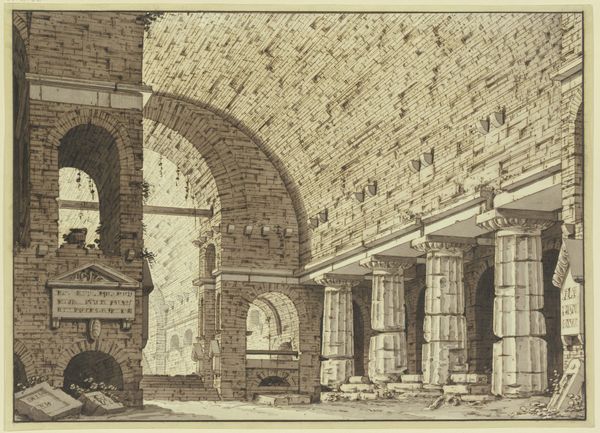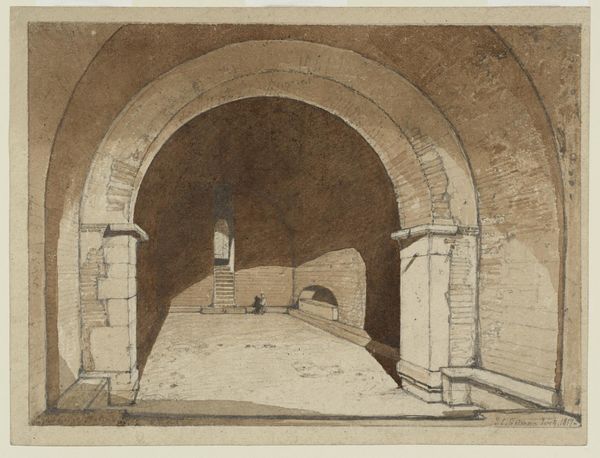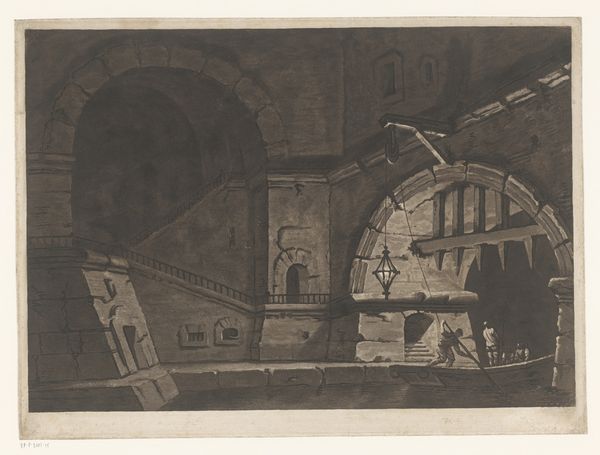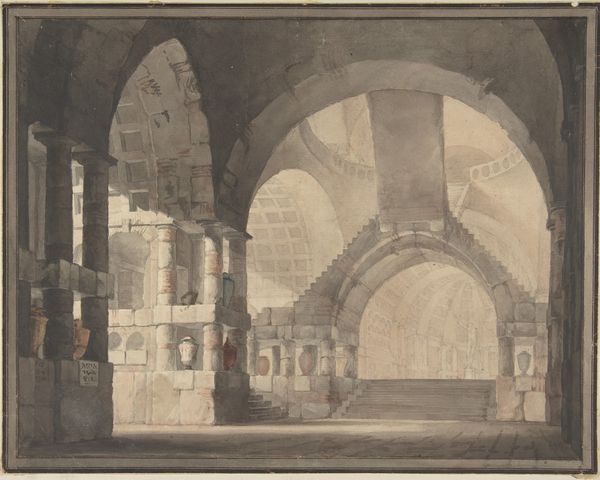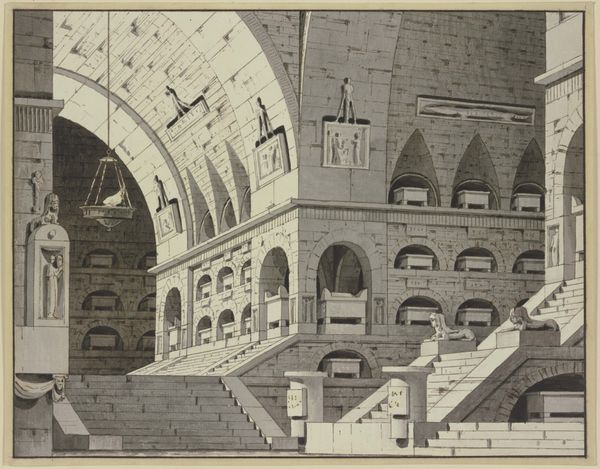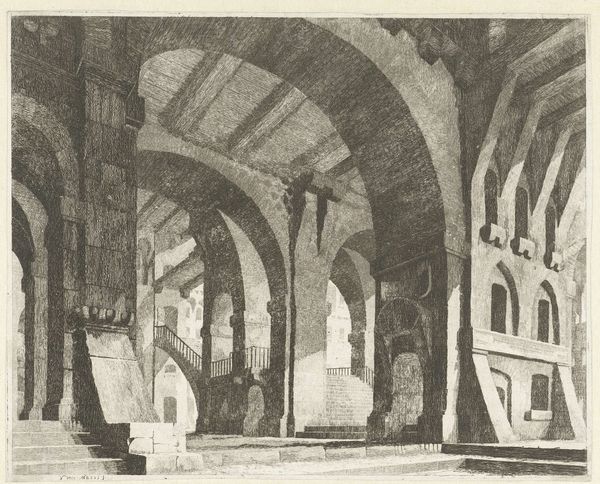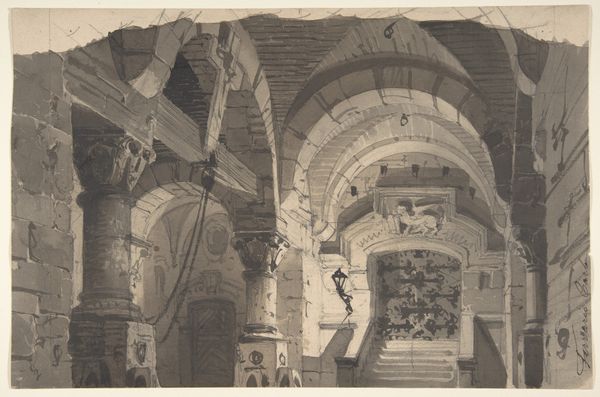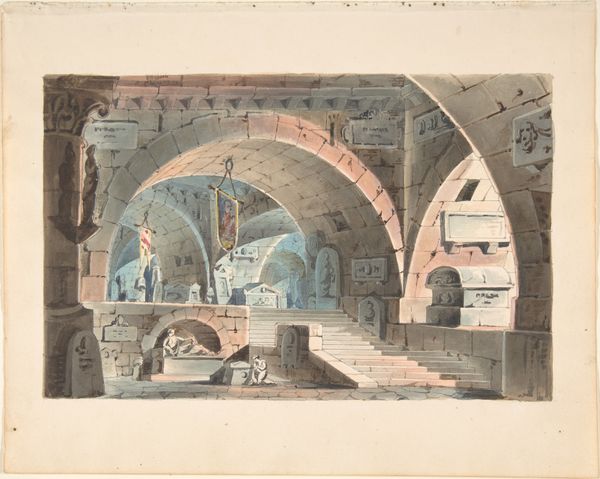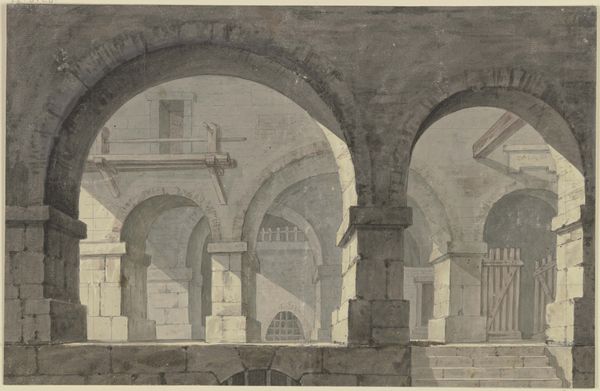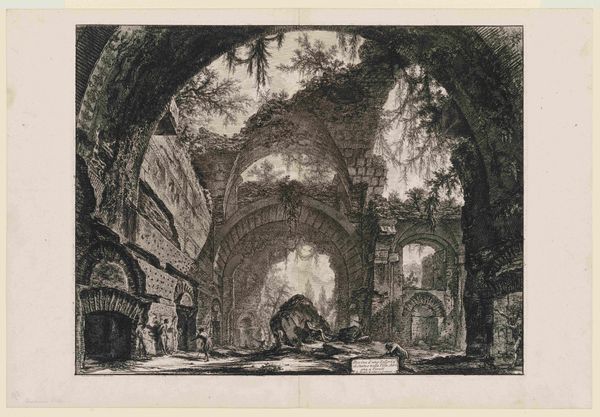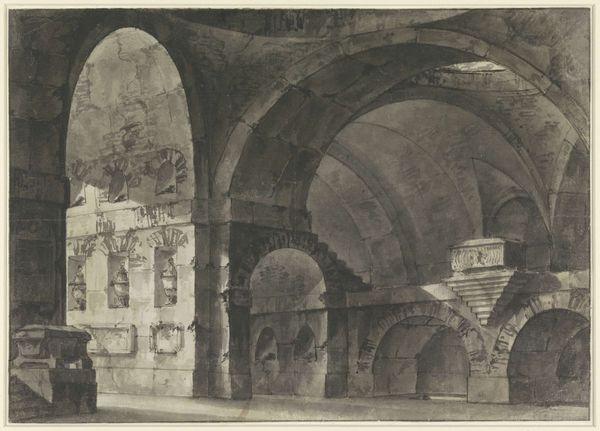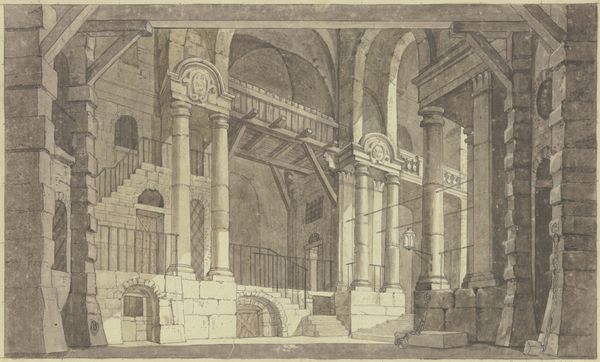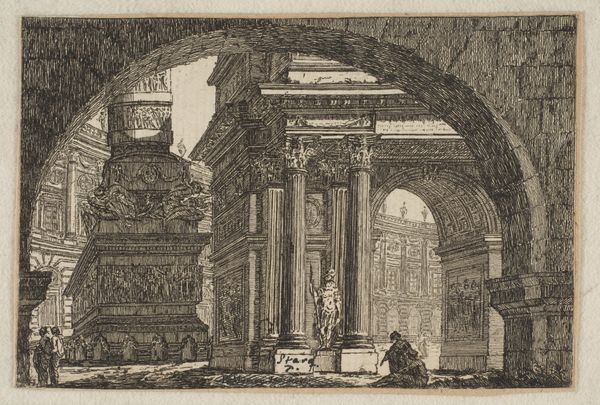
drawing, coloured-pencil, ink, indian-ink, architecture
#
drawing
#
coloured-pencil
#
landscape
#
ink
#
coloured pencil
#
geometric
#
classicism
#
indian-ink
#
15_18th-century
#
history-painting
#
architecture
Copyright: Public Domain
Editor: Here we have a drawing entitled "Grabgewölbe mit einer Pyramide" which translates to Burial Vault with a Pyramid. It appears to be created with ink and colored pencils sometime in the 18th century. The sheer scale of this imagined architecture is what strikes me. How do you interpret this work? Curator: I see a fascinating convergence of anxieties and aspirations of its time. Consider the fascination with Egypt in the 18th century, fuelled by colonial desire and the appropriation of ancient cultures. This drawing, with its pyramid and hieroglyphic-like symbols, speaks to that moment of cultural appropriation, but it also presents us with reflections of power. The pyramid, a symbol of absolute authority in its original context, is placed within a European architectural setting, possibly Roman, hinting at an attempted synthesis, or even a claim to a similar kind of power. Editor: That’s interesting. I hadn't thought about it in terms of colonial desires. Do you think that impacts how we should view the artwork? Curator: Absolutely. It requires us to critically examine the gaze of the artist, the cultural context of the intended audience, and how power dynamics are visually represented and perhaps, perpetuated. Is the artist celebrating the aesthetic or co-opting its power? Moreover, whose stories are centered in this imagined space and whose are erased? Editor: So, by looking at this, what seems to be a beautiful architectural drawing, we can open conversations about cultural power? Curator: Exactly! Art becomes a lens through which we can analyze historical attitudes towards otherness and empire, inviting discussions on representation, appropriation, and the responsibilities that come with engaging with cultures outside of our own. Editor: Thank you. It definitely gives me a lot to think about. Curator: And hopefully, invites further questioning of how the past informs the present.
Comments
No comments
Be the first to comment and join the conversation on the ultimate creative platform.
